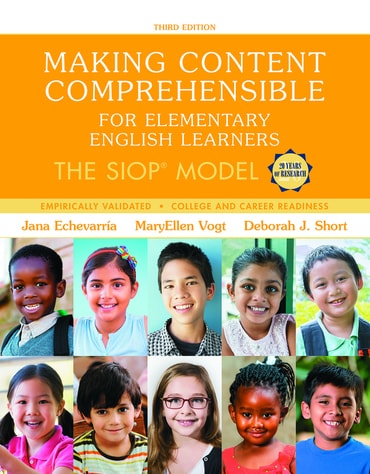Switch content of the page by the Role togglethe content would be changed according to the role

Making Content Comprehensible for Elementary English Learners: The SIOP Model, 3rd edition
Published by Pearson (February 27, 2017) © 2018
- Jana Echevarria California State University, Long Beach
- MaryEllen Vogt California State University, Long Beach
- Deborah J. Short Academic Language Research & Training, Arlington, VA
Pearson+ subscription
per month
-month term,ISBN-13: 9780134550404
Making Content Comprehensible for Elementary English Learners: The SIOP Model
Published 2017
Paperback
$63.99
Price Reduced From: $79.99
ISBN-13: 9780134550206
Making Content Comprehensible for Elementary English Learners: The SIOP Model
Published 2017
Need help? Get in touch